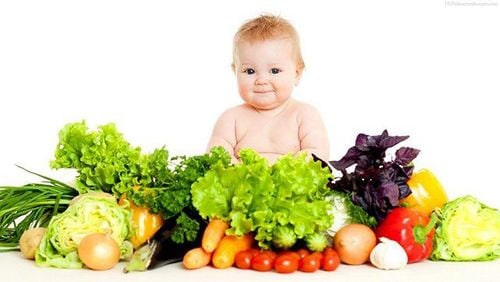This is an automatically translated article.
15 months old baby can eat solid foods completely and perfect minimal motor skills. Moreover, the little child is now a great assistant with simple household chores. At the same time, monitoring the baby's growth is still essential. Therefore, parents need to know how tall a 15-month-old child is to assess whether the child's development is appropriate or not.
1. How tall is a 15-month-old baby?
According to the World Health Organization, the average weight of a 15-month-old baby is 10.4 kg (23 pounds) for girls and 11.1 kg (24.5 pounds) for boys. However, besides weight, parents also need to know how tall a 15-month-old baby is to get a comprehensive growth assessment. Accordingly, the average height of 15-month-old children is 77.5cm (30.5 inches) for girls and 79.5cm (31.2 inches) for boys. Therefore, a 15-month-old baby 75cm tall can be considered a bit low compared to the height index to achieve at this age.
During routine checkups at this age, your doctor will likely ask what certain growth milestones your 15-month-old is achieving, to see how your baby is developing. At this age, if parents have any concerns about their child's development, talk to their pediatrician or child nutritionist for appropriate advice.
2. Other physical development of 15-month-old children
In addition to wondering how tall a 15-month-old is, issues of physical development also need to be taken care of. Here are other physical developments that a 15-month-old needs to achieve:
Walking: The baby should be able to walk steadily on his own at least a few steps. About half of 15-month-old babies can walk fluently. Some are even learning to run or start learning to walk backwards. Practice speaking: Most 15-month-olds can say at least one word. Half can say at least two words. Moreover, children's vocabulary about everything around them is increasing day by day. If the child can't speak yet, parents need to talk to the child more and ask the child to repeat the new words he hears, gradually forming a habit of remembering the language for the child. Teething: The first molars may be starting to erupt. For some children, the eruption of baby teeth can be painful and uncomfortable. The child may be fussy, drool frequently, and refuse to eat. However, these are normal symptoms of children at this stage. Parents can ease their child's pain by giving them soft or cool foods. Identify the functions of objects. Children are beginning to understand what everyday objects are used for, such as a broom for sweeping and a spoon for scooping up food. Some 15-month-old babies can recognize and point to certain body parts when their parents ask them to.

Bên cạnh thắc mắc trẻ 15 tháng cao bao nhiêu thì các vấn đề về sự phát triển thể chất cũng cần được quan tâm
3. Sleep for a 15-month-old baby
Parents may find that their 15-month-old is already quite settled with a daily sleep routine, although teething, occasional illnesses and a baby's desire to stay awake to play all day can sometimes be influence this habit.
Children 1 - 2 years old should sleep a total of 11 - 14 hours in a day. Also, it's normal for a 15-month-old baby to start having nightmares and at this age, babies can't distinguish between a dream and a reality. That can lead to some pretty serious night wakings. If a 15-month-old is sleeping soundly and suddenly has a nightmare, perhaps parents will have to do some midnight reassurance. Remind your child that his dreams aren't real but know that it will be a while before he really understands the difference.
In addition to haunting dreams, there are other reasons why children don't want to go to sleep, that is, they don't want to miss something. Therefore, parents need to always try to settle things before going to bed, like turning off the TV, music, electronic devices, reading soothing stories and keeping everything consistent. If parents usually read 2 books before going to bed, stick with 2 books. If a parent reads five books a night, a child may try to convince an adult to do it every night, even if it causes a later bedtime.
4. Food for 15 months old baby
Nutrition is a factor affecting a child's weight and height. Parents may notice that 15-month-old babies don't always seem interested in eating a large meal or are increasingly picky about the foods they eat. That's completely normal at this age.
However, parents continue to feed their 15-month-old babies three meals and two snacks a day with a variety of foods daily in all food groups (vegetables, fruits, whole grains, proteins and dairy) ).
Nutritionists say most toddlers need about 1,000 calories per day or about 40 calories per inch of their height. But this applies in the practice of preparing a child a serving of one-quarter of an adult's serving. Then let the child choose the amount of extra food according to his or her appetite.
Also, make mealtime an event when possible, having regular meals together as a family can help encourage children to try different foods, and learn how to socialize. table manners and practice healthy eating habits.

Bé 15 tháng tuổi cao bao nhiêu bị ảnh hưởng rất nhiều từ chế độ dinh dưỡng của trẻ
5. Activities to build for 15-month-olds
15-month-old children know how to operate flexibly. Accordingly, there are many interesting activities for parents to do with their children to create quality bonding time and help their children's comprehensive development.
Fun activities, games and toys for 15-month-olds are:
Ball play: This is the perfect age to kick, roll and throw the ball together. Coloring with crayons: Half of 15-month-olds can scribble with crayons. Parents need to provide children with colorful pens for children to express their thoughts. Storytelling: Children may be learning to turn the pages of their favorite books and point to pictures when you ask them to identify objects in them. Meal preparation: This is a great activity to improve the quality of meals as well as improve anorexia for malnourished children. Parents should involve their children in the entire meal preparation process, from choosing favorite foods to presenting them on the table, which will help children enjoy their fruits more joyfully. In short, how tall or how tall a 15-month-old baby is is what most parents expect from month to month. Knowing your baby's normal growth chart over time will make it better to monitor your child's physical development at home. Parents also need to pay attention to nutrition and physical activities to build the best development foundation for their children in the second year of life.
For the baby to develop better, the baby should also be supplemented with necessary micronutrients such as: Zinc, selenium, chromium, Vitamins B1 and B6, Ginger, acerola fruit extract (vitamin C), ... to improve Improve your taste, eat well, reach the right height and weight, and exceed the standard, have a good immune system, strengthen your resistance to get sick less often and have less digestive problems.
To have more knowledge about taking care of children according to age, please visit the website (vinmec.com) regularly and make an appointment with the leading doctors, Pediatricians - Nutrition experts when you need advice.













